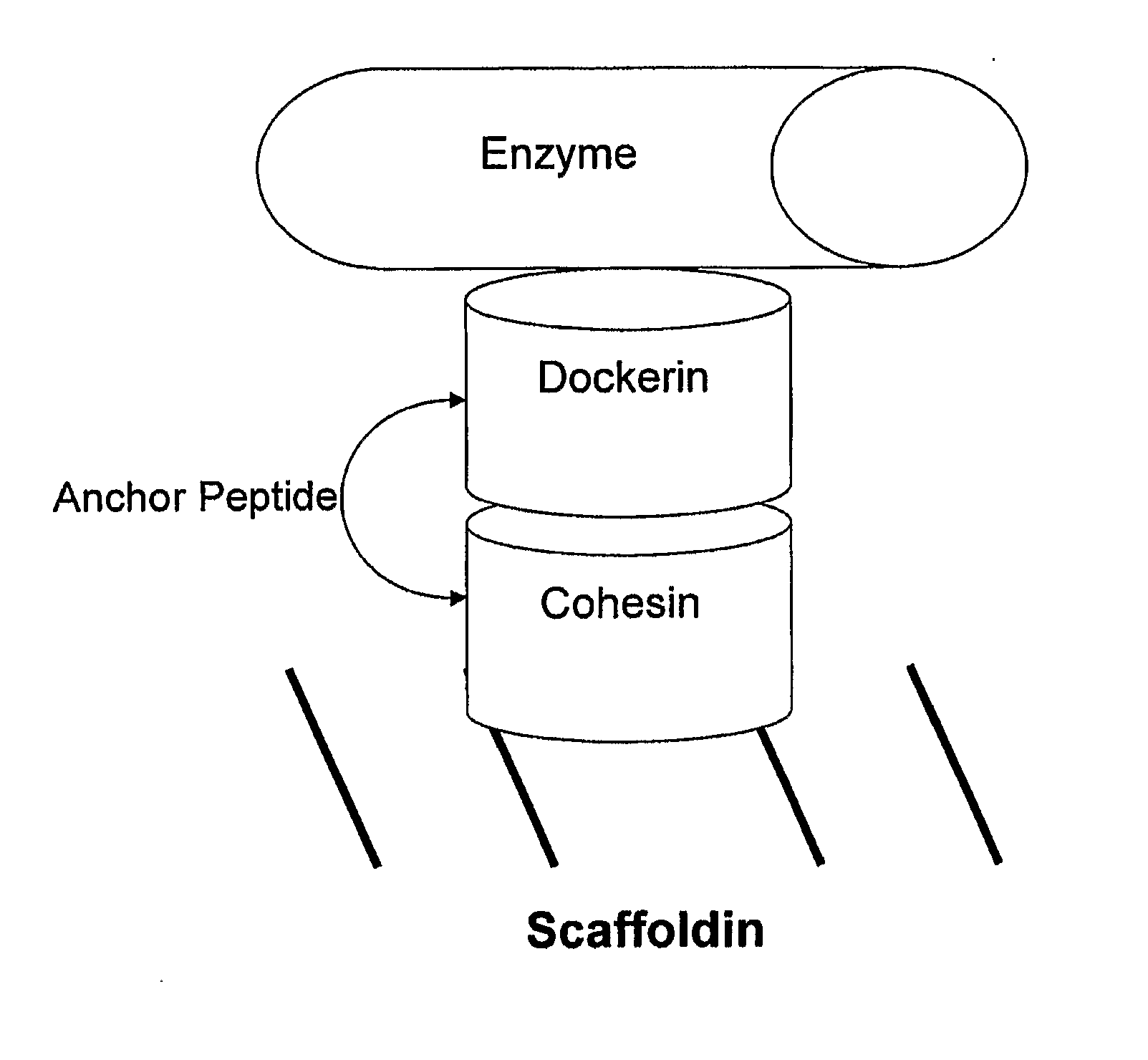Modified microorganism uses therefor
a technology of modified microorganisms and microorganisms, which is applied in the field of microorganisms, can solve the problems of hindering the use of potentially useful microorganisms, the genetics and biochemistry of such microorganisms are not as well-known as compared, and the shortening of the full potential of gene redirection, etc., to achieve the effect of increasing fatty acid production
- Summary
- Abstract
- Description
- Claims
- Application Information
AI Technical Summary
Benefits of technology
Problems solved by technology
Method used
Image
Examples
examples
[0218]1. Yeast Engineered to Express Synthetic Cellulosome
[0219]Yeast are engineered to express a synthetic cellulosome by preparing a plasmid containing 1 or more cellulosic material-degrading enzymes, a secretion signal, and the alpha-agglutinin domain for cell surface binding and display. This plasmid is amplified in E. coli and then transformed into yeast for fermentation, thus producing large quantities of the engineered yeast host.
[0220]As a specific, non-limiting example, the method of Y. Fujita et. al., recounted here, is used to express cellulose-degrading enzymes on the yeast cell surface. Plasmids pBG211, for cell surface display of beta-glucosidease from A. aculeatus No. F-50 BGL1, and pEG23u31H6 for cell surface display of the EGII gene (egl2, Accessions: AAM41665, EC 3.2.1.4) from T. reesei QM9414, are serially transformed in S. cerevisiae MT8-1, and propagated on SD medium (6.7 g / L nitrogen base with appropriate supplements such as adenine, leucine, and tryptophan) wi...
PUM
| Property | Measurement | Unit |
|---|---|---|
| melting points | aaaaa | aaaaa |
| pH | aaaaa | aaaaa |
| fatty acid production | aaaaa | aaaaa |
Abstract
Description
Claims
Application Information
 Login to View More
Login to View More - R&D
- Intellectual Property
- Life Sciences
- Materials
- Tech Scout
- Unparalleled Data Quality
- Higher Quality Content
- 60% Fewer Hallucinations
Browse by: Latest US Patents, China's latest patents, Technical Efficacy Thesaurus, Application Domain, Technology Topic, Popular Technical Reports.
© 2025 PatSnap. All rights reserved.Legal|Privacy policy|Modern Slavery Act Transparency Statement|Sitemap|About US| Contact US: help@patsnap.com



